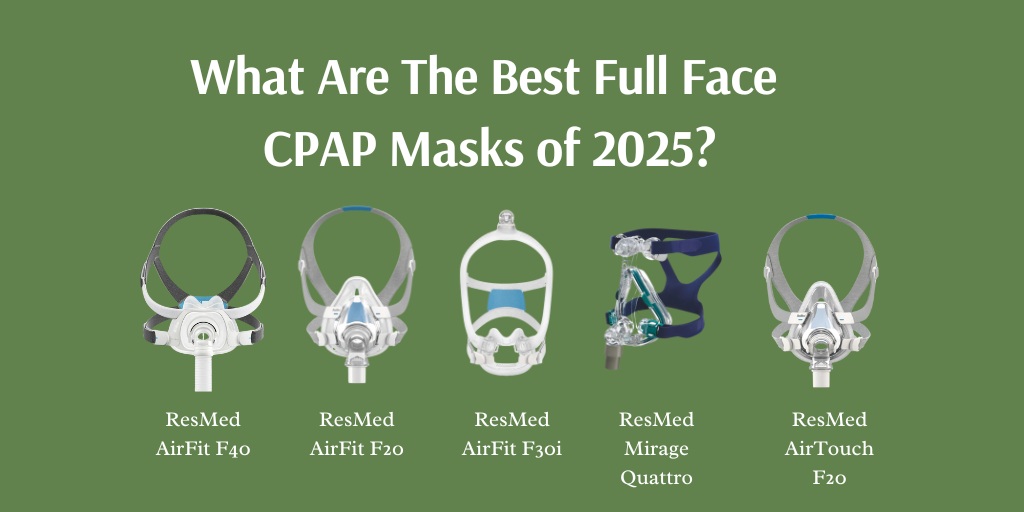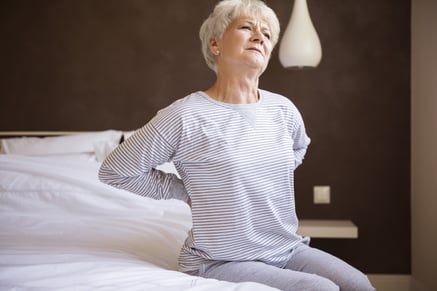
Chronic Obstructive Pulmonary Disease (COPD) is a general term for lung related diseases. They are grouped together for their similar symptoms and care directives and all form a progressive disease that involves congestion of the respiratory system. Back pain is a common inconvenience caused by COPD.
How the Cytokine Network is Affected
Inflammation is the body's natural response to injury. When you cut yourself or stub your toe, acute inflammation occurs. It is the body's attempt to reduce pain, fight off infection, and repair damaged tissues. With a condition like COPD inflammation can become chronic with the body always at work attempting to repair damage to the lung tissue, which for the most part is irreparable. Inflammation then becomes chronic and can be dangerous.
Cytokines are instrumental in orchestrating the inflammatory response along the respiratory track in asthma and COPD patients. Certain inflammatory cytokines can be associated with pain behaviors and can cause injured nerves to express pain responses. This can can cause back, muscle, joint or bone pain within COPD or asthma patients.
Osteoporosis and Osteoarthritis
Back pain could also be due to osteoporosis and osteoarthritis. These two conditions are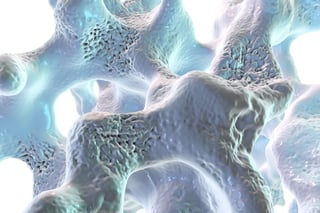 reported in about 20% of COPD patients. Osteoporosis is the thinning of the bones, which leads to frequent fractures. Many COPD patients have given up dairy for it's tendency to thicken mucus which is already a problem to clear for respiratory patients. This often leads to a calcium deficiency which weakens bones. There are plenty of foods that are rich in calcium that are not dairy. Add some of these to you diet and see if back or bone pain subsides. It's also important to eat foods with magnesium as magnesium ensures that the body receives maximum benefits from calcium consumption.
reported in about 20% of COPD patients. Osteoporosis is the thinning of the bones, which leads to frequent fractures. Many COPD patients have given up dairy for it's tendency to thicken mucus which is already a problem to clear for respiratory patients. This often leads to a calcium deficiency which weakens bones. There are plenty of foods that are rich in calcium that are not dairy. Add some of these to you diet and see if back or bone pain subsides. It's also important to eat foods with magnesium as magnesium ensures that the body receives maximum benefits from calcium consumption.
- Almonds
- Figs
- Bok choi
- Okra
- Kale
- Tofu
- Spinach
- Navy beans
- Watercress
- Celery
- Salmon
Muscle Atrophy
The pain could also be caused by something as uncomplicated as inactivity. As COPD becomes more pronounced it is common for patients to try to avoid taxing themselves to avoid exacerbation. Unfortunately this often has the opposite effect as muscles atrophy from lack of use. Diminishing core strength leads to poor posture, which leads to back pain. If you have been experiencing back pain for longer than a week it's time to consult your physician.
Talk to your Doctor
Whatever the reason is for back pain, the patient should let their physician know so they can get advice on how to be relieved of the pain. There are some general tips to relieve back pain and then there are some specialized ones. However, only the physician can give proper advice depending on the cause of pain and lung function. Below are some general guidelines on how to deal with COPD back pain.
Heat
The first 24-48 hours pain can be tolerated by chilling the affected area with an ice pack. Generally applying cold is for injuries and can alleviate swelling. After this, 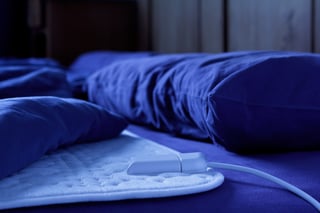 patients can apply a little heat. These actions are geared towards relaxing the muscles on the back. Heating pads, heating wraps, hot baths and warm gel wraps are some of the tools to use for a simple home heat therapy.
patients can apply a little heat. These actions are geared towards relaxing the muscles on the back. Heating pads, heating wraps, hot baths and warm gel wraps are some of the tools to use for a simple home heat therapy.
Heat dilates the blood vessels in the back subsequently increasing flow of oxygen and nutrients to the spine. It also stimulates sensory receptors to decrease the pain signals being sent to the brain. This method of pain relief is inexpensive and easy. The patient should ensure it is not so hot that it burns the skin. If the pain persists then medical intervention is necessary.
Physical Activity
Exercise features quite prominently in the wellness of a COPD patient. There is a recommended list of exercises for COPD patients. The activities on that list are meant to keep the body mobile thus avoiding some of these consequent pains. Often patients forget that they are ailing and end up exhausting themselves. It is important to remember to pace one self. Too little activity is also a problem. Some COPD patients avoid moving too much for fear of pain. This causes the spine to tense up. It is okay to take a walk or even do aerobics, with permission from the doctor, of course. You don't have to run a marathon, chair exercises or some light weight training might do the trick.
Muscle Stretch
For the less severe COPD patients who still go to work, they should try to stretch at least once every hour. Sitting in one position and even worse, slumped over, can cause massive pain in the back for any person. Their work spaces should also be arranged ergonomically. They should have chairs with proper back and neck support. There are any number of stretches for back pain on YouTube or online. Exercise practices such as Yoga or Tai Chi could also be beneficial for strengthening your core, increasing joint flexibility, as well as working out sore muscles.
Diet and Weight All COPD patients, whether they are experiencing pains or not, should eat a balanced diet. The food should be rich in essential nutrients. Low fat proteins, complex carbohydrates, a lot of fruits and vegetables and foods rich in vitamins and essential minerals.
All COPD patients, whether they are experiencing pains or not, should eat a balanced diet. The food should be rich in essential nutrients. Low fat proteins, complex carbohydrates, a lot of fruits and vegetables and foods rich in vitamins and essential minerals.
A patient may also be asked to avoid, caffeine, dairy and salt. Dairy may seem like a bit of an odd restriction but it thickens phlegm therefore blocking the respiratory passages. This causes irritation and coughing which will most definitely cause back and chest pain.
In the same respect, optimum weight should be maintained. A Body Mass Index (BMI) between 18.5 - 24.9 is considered a normal/healthy BMI. Your BMI is determined from your height, weight and age, and is then correlated to a scale. How to calculate BMI:
weight (lb) / [height (in)]2 x 703 = BMI
Example: 160 (lbs) / 69 (in)2 x 703 = 23.6
For someone who is 5'9" and 160 lbs, they are at a healthy BMI.
Digestion itself takes a lot of energy to accomplish so avoid foods that are hard to digest. An overly full stomach also pushes against the diaphragm making breathing extra work. Eat smaller portions and try to eat slowly.
No Smoking
Smoking is harmful to everyone’s health. It is worse for COPD patients. Research has proved relation between smoking and degeneration of intervertebral disc. Nicotine was found to restrict blood flow to the discs that cushion the vertebrae. To decrease the prevalence of back pain and COPD exacerbation. You've heard all the harmful effects of tobacco, this is just one more. Please download our free Quit Smoking Guide and quit today!
Acupuncture
This is a form of alternative medicine where thin needles are inserted into the skin at strategic points. This helps the body embark on a natural self-healing process. Acupuncture has the ability to stimulate the nervous system, release neurotransmitters and trigger electromagnetic impulses. All these reactions affect pain.
In addition to letting the physician know about acupuncture plans, the patient should make sure to find an accredited acupuncture professional. The practitioner should be licensed and trained lest they harm the patient.
Therapeutic Massage
One could also try out massage. Professionals knead the body applying pressure where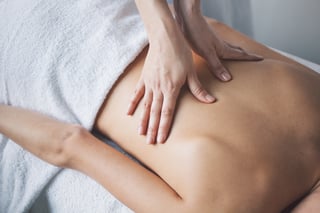 necessary by this technique. The setting and oils used in massage are all aimed towards maximum relaxation of the person before the muscles themselves can soften. This has been reported to be very effective in the alleviation of pain and would be especially helpful for COPD patients. Be sure to ask your doctors if there are any essential oils you should be wary of at the massage therapist.
necessary by this technique. The setting and oils used in massage are all aimed towards maximum relaxation of the person before the muscles themselves can soften. This has been reported to be very effective in the alleviation of pain and would be especially helpful for COPD patients. Be sure to ask your doctors if there are any essential oils you should be wary of at the massage therapist.
Stress Free
It is very common for emotional and psychological pain to cause physical pain. When one is stressed, the body does not function properly. It is a matter of grave importance that a patient learns to manage stress and worry. It may be easier said than done but considering the health benefits, it is a goal worth chasing. It may start with simple pleasure. Take time for the things that bring you joy. Join a club full of people who have a common interest. Social contacts are important for everyone and have proven to lead to better patient outcomes.
There are many COPD support groups. The benefits of the companionship and understanding cannot be overstated. It is easy to be tempted to become a recluse but that urge should be fought, as it does nothing for the patient’s welfare. If you would like to join our Facebook Group Just Click Here I'm sure there are many support groups in your area through respiratory clinics or even local churches.
Guided Imagery
This is a technique by skilled practitioners whereby the imagination is focused in a proactive and positive way. They help participants generate mental images that create sensory perceptions. This practice brings up mental content that elicits strong emotion. It takes advantage of the connection between visual brain and involuntary nervous system. Visualization therapy, as it is otherwise called, has been used extensively to lower blood pressure and relieve stress. It also helps in the struggle to quit smoking, which is essential for COPD patients. This form of therapy is also known to manage pain and promote healing.
Chemical Intervention
General relief tips may not be very helpful to a COPD patient. The patient should see a  doctor for a treatment plan that is in line with their medical history. Any type of pain for a COPD patient should be taken very seriously. COPD patients are often prescribed a dose of steroids for dyspnea episodes and other situations. These steroids can worsen back pain if it is due to osteoporosis. Non-steroidal anti-inflammatory drugs are prescribed for osteoporosis cases. However, the patient should be very careful as overdose could lead to stomach bleed and other serious complications.
doctor for a treatment plan that is in line with their medical history. Any type of pain for a COPD patient should be taken very seriously. COPD patients are often prescribed a dose of steroids for dyspnea episodes and other situations. These steroids can worsen back pain if it is due to osteoporosis. Non-steroidal anti-inflammatory drugs are prescribed for osteoporosis cases. However, the patient should be very careful as overdose could lead to stomach bleed and other serious complications.
Over the Counter Painkillers
The doctor might determine pain to be only mild to moderate. In this case, non-steroidal pain medication will be prescribed with detailed instructions on how to take them. It is imperative that the patient follow doctor’s orders concerning medication and treatment plan. Speak to your doctor about long term use as some are detrimental to kidney function.
Narcotic Painkillers
This very strong pain medication can only be bought with a prescription. They are potentially addictive but they work quite well for moderate to severe back pain. A doctor would determine the dosage with other prescribed medication in mind, careful not to over medicate the body.
Pulmonary Rehabilitation
This is an interactive program where COPD patients learn how to cope and live the highest quality of life possible. The program integrates exercise, education and support. Exercise covers activity, education covers what to and not to do while support covers mental health. In some cases, back pain is caused by stress and feelings of despair. The support offered at Pulmonary Rehabilitation will cover this extensively.
Calcium and Vitamin D

For strong bones and prevention of osteoporosis, the body needs to have adequate calcium. Vitamin D, or sunshine to keep it simple, helps in the absorption of Calcium. It is not entirely necessary for one to take supplements but the physician’s advice should be considered on this matter. Effects are not immediate but the patient’s pain will decrease gradually.
Eat Foods with Anti-Inflammatory Properties
There are plenty of foods that fight inflammation that are good and good for you too! First of all lets look at some foods to avoid if inflammation is a problem.
- Red meat
- Processed meat
- Margarine
- Fried foods
- White breads
- Refined carbohydrates
- Sugary beverages
The good news is that foods to add are readily available as well as tasty!
- Almonds
- Walnuts
- Olive oil
- Tomatoes
- Strawberries
- Cherries
- Orange
- Salmon
- Sardines
- Tuna
- Spinach
- Collard greens
The Mediterranean Diet is considered one of the healthiest diets overall and is especially beneficial for combating inflammation.
Anti-depressants
Physical pain will sometimes be brought about by emotional and psychological pain. Living with COPD can be very distressing and the support suggested above might not be useful. Therefore, the doctor will prescribe anti-depressants to attack the emotional root of the back pain.
Radiofrequency Ablation
Science is constantly advancing to better human lives. This method of pain relief involves a heated needle and is targeted towards pain carrying nerves. The needle interferes with the transport of pain information to the brain. However, this is a little extreme and requires a doctor’s stamp of approval. This could be a last resort.
Take Heed
There could be a variety of causes for back pain for COPD patients. Whatever the cause, a patient should see a doctor as soon as possible to rule out dire complications. COPD patients should not ignore back pain as it could worsen their anxiety or otherwise negatively affect mental health, limit activity and contribute to a COPD flare up. The tips and medications given may not necessarily cure back pain. The aim is, first and foremost, to improve the quality of life of the COPD patient.








